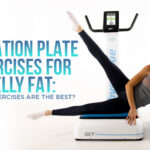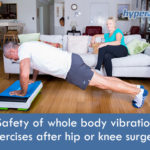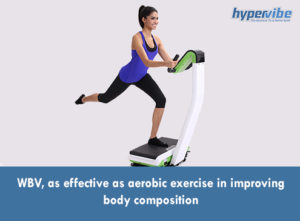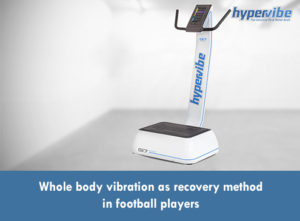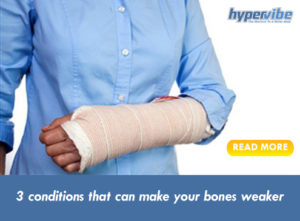Whole Body Vibration in Osteoporosis: How Can It Help?
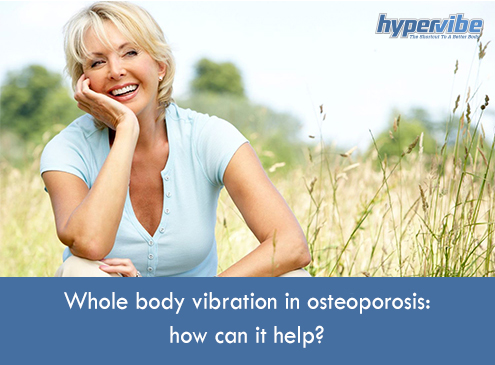
Can whole body vibration really help osteoporosis sufferers improve their bone mineral density and reduce the risk of fractures? Is this form of training and therapy safe enough for people with already weak bones, or should women and men affected by osteoporosis stay away from vibrating machines?
Are WBV exercises efficient in preventing the decrease in bone mass density, or is this form of training useful only in people who have already been diagnosed with osteoporosis and are looking for a way to minimize the damage caused by this condition to their body?
Osteoporosis overview – causes and symptoms
Osteoporosis affects more than 3 million people in the UK, more than 10% of all sufferers requiring hospital treatment at some point in their lives for fragility fractures caused by this condition. A common but tricky disease, osteoporosis erodes the bones and makes them weaker and prone to fractures, although its symptoms may not be visible in the initial stages of the condition.
Given that it comes with no warning signs and is a progressive disease that gets worse with age, osteoporosis is difficult to diagnose in its less threatening phases, and most patients find out they suffer from this bone disease after they suffer a fracture. As strong as the bone tissue is when affected by osteoporosis even a minor bump or fall from a reduced height can be enough for a fracture to occur.
The loss of bone mass starts around the age of 30 but the condition affects mostly people aged 50 and above, 1 in 2 women and 1 in 5 men over 50 suffering from osteoporosis. The most affected areas are the wrists, hips, and spine, but the ribs, pelvis, and arms can also be affected. Until around the age of 30, a healthy person’s body builds more bone tissue that it destroys, the process of bone tissue replacement being natural. Hormonal changes, an inadequate diet, lifestyle habits, genetics, medications, and the aging process can speed up the rate of bone destruction while slowing down the formation of new tissue.
This is how the decline in bone mineral density begins, and once the bone breakdown outpaces the buildup of new tissue, the likelihood of developing osteoporosis and breaking a bone as a result of this condition increases significantly. Women lose bone rapidly in the first years after menopause, and people who are calcium or vitamin-D deficient as well as smokers and those with a sedentary lifestyle are likely to lose bone mass faster.
Now, the bone-thinning process doesn’t necessarily involve changes in your external appearance. As said, osteoporosis doesn’t usually have external symptoms, but in some cases, bone deformities such as changes in the spine curvature for example may occur. Once the spinal curvature changes its original shape, a loss in height may also happen, and this can be another sign of osteoporosis. Thus, if you’re 35 or older, and you notice changes in the shape of your spine, in your posture, or your height, you may want to make an appointment with your physician to make sure your bones aren’t affected by this condition.
Does research support the use of whole body vibration in osteoporosis?
There’s growing evidence that the use of whole body vibration in the prevention and treatment of osteoporosis is not only safe but also recommended. In numerous studies, researchers have found that exercising on a vibrating machine increases bone mass density and helps in building stronger bones, improving posture, and reducing the risk of fractures.
In today’s article we’ll take a look at some of these studies and we’ll start with an analysis done by German researchers, which included 5 studies totaling 368 participants aged 60.7-79.6 years on average. 132 of these participants performed whole body vibration exercises on vertical machines and 67 of them trained on side-alternating WBV platforms.
The technical parameters used in the included studies were 12Hz-40Hz frequency for the first group and 12.5Hz frequency for the pivotal machines. Amplitude varied between 1.7 and 12 mm, and G-force varied between 0.1G and 10G. The systematic review found that vibration machine exercises help in strengthening the muscles and bones, the temporary bone deformation that occurs as a result of vibration waves leading to an increase in bone density. Results of this analysis showed improvements in the lumbar spine and hip bones, by 0.5-0.7%, respectively 0.8-0.9%, as well as significant improvements in muscle contractions and strength.
This analysis is extremely relevant and important, as it is known that the hormonal changes that occur during menopause disrupt the body’s bone-building process. The levels of estrogen decrease once women reach menopause, and this prevents the body from absorbing and preserving calcium in the bones efficiently. As a result, the bone breakdown is accelerated, and women can lose up to 10% of their bone mass during menopause.
Practicing strength exercises or whole body vibration exercises is an effective solution for slowing down the breakdown of bones, as these forms of training strengthen not only the bones, reducing the risk of fractures, but also the muscles, which protect the skeleton and help in maintaining balance and proper posture.
UK researchers investigated the effects of vertical and side-alternating on fall risk factors and bone turnover in older people at risk of falls, and found that whole body vibration training increased leg power and bone formation, but didn’t provide additional benefits to balance or fall risk beyond a typical falls prevention program in this group of patients. The study was published in the Age and Ageing journal and involved 61 adults aged 80.2+ years, of which 37 women and 24 men. They attended 3 whole body vibration sessions per week for 12 weeks, with sessions increasing to 6 bouts of 1-minute of WBV. Gains in leg power and bone formation were significantly greater in the vibration group compared to the sham group.
Chinese scientists found that post-menopausal women can increase their bone mass with up to 5.6% by performing vibration machine exercises for 10 minutes a day, for 6 months. 116 women with osteoporosis were involved in this study, 66 of them, performing vibration exercises, while the other 50 served as control. The first group exercised at a frequency of 30Hz and an amplitude of 5mm, five times a week, for 10 minutes. Researchers found improvements in bone mass density in the femoral neck and lumbar areas, as well as a reduction in chronic back pain following whole body vibration training.
We, therefore, recommend you to include whole body vibration into your training routine at least 2-3 times per week, in combination with aerobic exercises, to strengthen your bones and to reduce the risk of fractures caused by osteoporosis.
Have something to add to this article? Comment below or join our Facebook community and share your thoughts with us!



